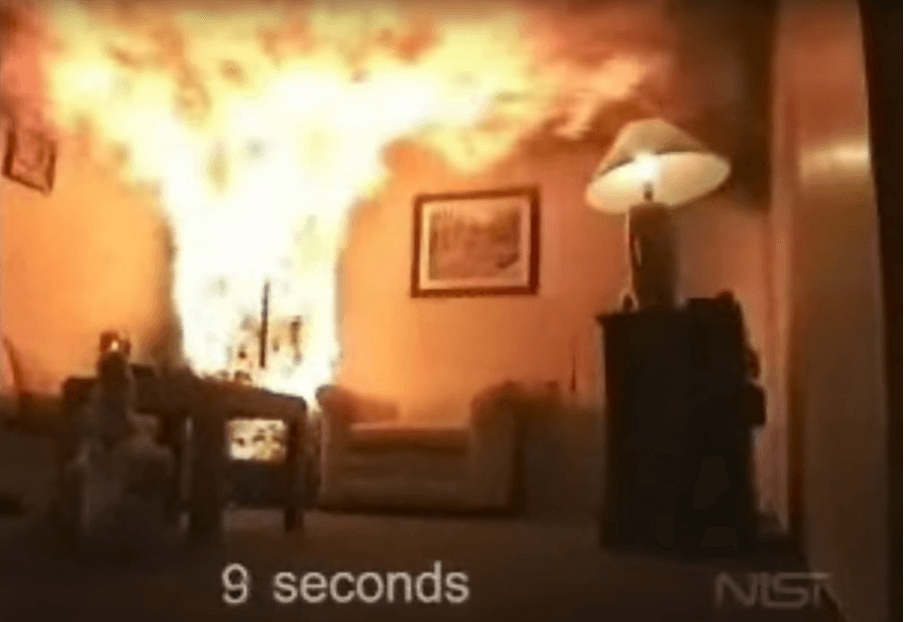 In the spirit of tradition, the month of December marks the period of Christmas and New Year festivities. Whether indoors or outdoors, adding Christmas decorations remains as popular as ever. We decorate with a multitude of items. Think, for example, of Christmas string lights, wreaths and the endless list of ornaments.
In the spirit of tradition, the month of December marks the period of Christmas and New Year festivities. Whether indoors or outdoors, adding Christmas decorations remains as popular as ever. We decorate with a multitude of items. Think, for example, of Christmas string lights, wreaths and the endless list of ornaments.
These items are mostly sold in shops while some people prefer to make their decor by hand in a more traditional manner. Among the decorative elements, the Christmas tree is the most iconic, and has been part of Christmas for several centuries.
However, the addition of such items in the contents of our homes can represent a significant fire risk, especially in the case of homemade decorations with easily ignited materials. Year after year, CEP Forensic’s experts are called upon to analyze the causes of a large number of fires occurring during the holiday season, some of which have tragic consequences.
A large proportion of these fires involve human error. The inappropriate use of candles is at the top of the list of the most common causes of fires. The risks inherent in the use of candles are easy to imagine for most people. However, certain fire risks, including those linked to the presence of a Christmas tree, are less well understood.
Every year, many people find themselves faced with the dilemma of choosing between a real versus an artificial Christmas tree. The pros and cons are generally geared towards ecological issues, but the safety aspect is rarely taken into account in the selection process. The appeal of a real Christmas tree comes mainly from its authentic character and the scent of evergreen it gives off. Its lifespan is limited to a single season, but there are recycling solutions.
Artificial trees have the advantage of being reusable for several years, however they have to be stored between seasons. The needles are more often made of plastic material, which makes artificial trees much more difficult to ignite than their natural counterparts. In addition, they are less prone to sustain combustion.
A natural Christmas tree represents a significant combustible load in a room. Often the tree is placed near other significant fuel loads, such as a sofa. The lights that are added to decorate it are usually products imported from Asia, the quality and robustness of which may leave something to be desired. Thus, these electrical components can be known to deteriorate quite quickly, further increasing the risk of failure.
 The probability that a short circuit on a string of lights ignites a natural tree increases with the degree of drought of the tree. The same is true for the speed of propagation and the intensity of combustion. As per the picture, tests have shown that a natural Christmas tree can ignite completely in less than 10 seconds and result in full room involvement.
The probability that a short circuit on a string of lights ignites a natural tree increases with the degree of drought of the tree. The same is true for the speed of propagation and the intensity of combustion. As per the picture, tests have shown that a natural Christmas tree can ignite completely in less than 10 seconds and result in full room involvement.
By comparison, a short circuit on a string of lights is unlikely to ignite an artificial tree. Also, the fire would not spread throughout the tree unless exposed to a significant fuel load nearby.
There are different species of natural Christmas trees. In Canada, the main fir species are Balsam, Fraser and Cook. These types of trees do not offer the same level of resilience. For example, it is generally recognized that Fraser and Cook shed their needles less than Balsam.
Tips on the care of a natural tree is generally provided verbally by the retailer’s representative upon purchase. Real Christmas trees are often sold ready to use, including cutting near the end of the trunk to help absorb water. In order to preserve the appearance of the tree as long as possible, the trunk must be kept in water as soon as it is brought indoors. Natural Christmas trees must be kept away from all sources of heat such as a radiator or hot air vents.
Despite taking every precaution to care for it, a natural Christmas tree, regardless of its species, will inevitably wither over the next few weeks. A typical lifespan rarely exceeds a month.
That said, it is possible to reduce the risk of fire while enjoying the charms of a natural tree by observing the following precautionary measures:
- Do not place the tree in a place exposed to a flame or sparks (eg: wood-burning appliance, candles).
- Thoroughly inspect the condition of string lights and extension cords before installation. Do not use a damaged product. Beware of damage that can be caused by your pets.
- Check the water bucket daily and supply fresh water as needed.
- Do not leave the lights on all the time. Using a timer is generally effective in limiting the amount of usage time.
- Never leave the lights on when no one is home.
- Once the holiday season is over, take the tree outside.
In the end, if you do choose to go with a real Christmas tree, following all of the precautions above will allow you to enjoy its natural warmth through the holidays, while keeping fires in the hearth, where they should be.
